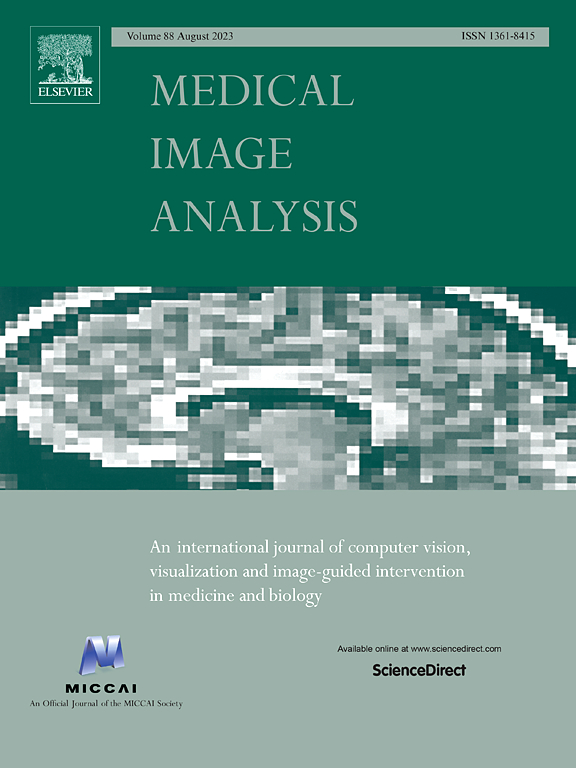Self-supervised 3D medical image segmentation by flow-guided mask propagation learning
IF 10.7
1区 医学
Q1 COMPUTER SCIENCE, ARTIFICIAL INTELLIGENCE
引用次数: 0
Abstract
Despite significant progress in 3D medical image segmentation using deep learning, manual annotation remains a labor-intensive bottleneck. Self-supervised mask propagation (SMP) methods have emerged to alleviate this challenge, allowing intra-volume segmentation with just a single slice annotation. However, the previous SMP methods often rely on 2D information and ignore volumetric contexts. While our previous work, called Vol2Flow, attempts to address this concern, it exhibits limitations, including not focusing enough on local (i.e., slice-pair) information, neglecting global information (i.e., volumetric contexts) in the objective function, and error accumulation during slice-to-slice reconstruction. This paper introduces Flow2Mask, a novel SMP method, developed to overcome the limitations of previous SMP approaches, particularly Vol2Flow. During training, Flow2Mask proposes the Local-to-Global (L2G) loss to learn inter-slice flow fields among all consecutive slices within a volume in an unsupervised manner. This dynamic loss is based on curriculum learning to gradually learn information within a volume from local to global contexts. Additionally, the Inter-Slice Smoothness (ISS) loss is introduced as a regularization term to encourage changes between the slices occur consistently and continuously. During inference, Flow2Mask leverages these 3D flow fields for inter-slice mask propagation in a 3D image, spreading annotation from a single annotated slice to the entire volume. Moreover, we propose an automatic strategy to select the most representative slice as initial annotation in the mask propagation process. Experimental evaluations on different abdominal datasets demonstrate that our proposed SMP method outperforms previous approaches and improves the overall mean DSC of Vol2Flow by , , and for the Sliver, CHAOS, and 3D-IRCAD datasets, respectively. Furthermore, Flow2Mask even exhibits substantial improvements in weakly-supervised and self-supervised few-shot segmentation methods when applied as a mask completion tool. The code and model for Flow2Mask are available at https://github.com/AdelehBitarafan/Flow2Mask, providing a valuable contribution to the field of medical image segmentation.
求助全文
约1分钟内获得全文
求助全文
来源期刊

Medical image analysis
工程技术-工程:生物医学
CiteScore
22.10
自引率
6.40%
发文量
309
审稿时长
6.6 months
期刊介绍:
Medical Image Analysis serves as a platform for sharing new research findings in the realm of medical and biological image analysis, with a focus on applications of computer vision, virtual reality, and robotics to biomedical imaging challenges. The journal prioritizes the publication of high-quality, original papers contributing to the fundamental science of processing, analyzing, and utilizing medical and biological images. It welcomes approaches utilizing biomedical image datasets across all spatial scales, from molecular/cellular imaging to tissue/organ imaging.
 求助内容:
求助内容: 应助结果提醒方式:
应助结果提醒方式:


